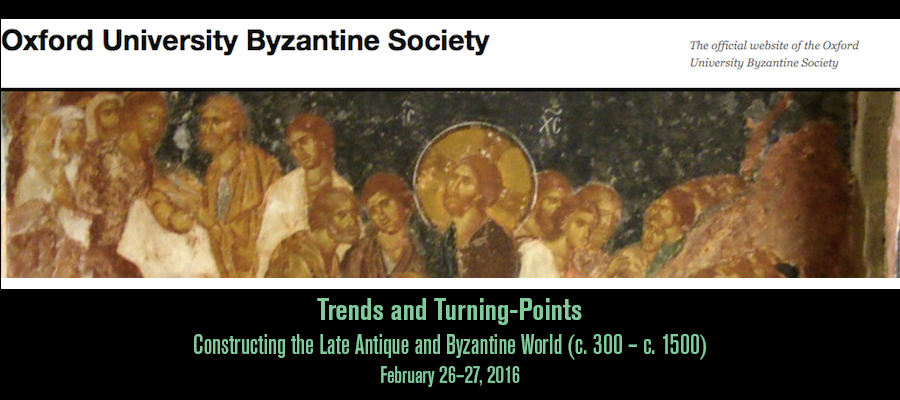Trends and Turning-Points: Constructing the Late Antique and Byzantine World (c. 300–c. 1500), Oxford University Byzantine Society’s 18th International Graduate Conference, Oxford, February 26–27, 2016
Spanning more than a millennium in time, ranging from the Atlantic to Iran, and including a vast array of polities, social groups, and cultural moments, the Late Antique and Byzantine world is, if nothing else, complicated and varied. Despite Gibbon’s famous attempt to reduce it to a single trend, the Late Antique and Byzantine world refuses to be simplified.
This conference aims to provide a platform to identify, discuss and debate the major trends and turning-points in the Late Antique and Byzantine world. Postgraduate scholars might choose to examine trends and turning-points on their own terms or to reflect critically on the limitations and blind-spots of our discipline, questioning the ways in which medieval Romans, their contemporaries and modern scholars have gone about constructing this past. We are calling for papers which explore all types of trends and turning-points in all fields of Late Antique and Byzantine studies. Papers might address problems such as:
- Trends in numismatic production and design
- From Late Antiquity to Byzantium, turning-point or trend?
- Complexity and new approaches to constructing the past
- Archaeological trends in conflict with historical narratives
- Economics with or without trends?
- Religious discourse as turning-point or trend
- Paradigmatic ‘trends’ of growth and decline
- ‘Great’ battles or the deaths of emperors as turning-points
- Constructing turning-points and trends in modern academic writing
